Of the many European destinations found around the Mediterranean, Malta may be the most well-rounded. This tiny country has everything you could ask for from an island destination, whether that be culture, beaches, history, or scenery. Sure you can come to Malta and just have a relaxing holiday, sitting by the pool and going out at night, but if you really want to see the country, there is plenty more to it.
Despite its size, there are plenty of things to do in Malta to easily fill five days. In fact, the challenge is working out how to fit the best of Malta into such a short trip. Thankfully, with a comprehensive Malta itinerary like this one, you won’t have any trouble working out important things such as where to stay or what to do in Malta in 5 days.
Best Time to Visit Malta
When planning your trip to Malta, one of the first things to think about is when you’d like to visit. Even though it’s an island destination in the Mediterranean, Malta still experiences different seasons and can get quite busy in the high season.
Many people tend to think of Malta as a summer destination because of its resorts and coast. Naturally that means that Malta’s high season hits during summer, with July, August and September being the busiest months on the island. At this time of year you can expect hot and sunny weather, plus prices for accommodation and tours to be at their highest.
Unless you’re really craving heat, the best time to visit Malta is actually in spring. From April to June Malta enjoys comfortable weather during the day, and nights that aren’t too cool. Plus there’s the added bonus that you won’t have to pay peak prices.
Another time of year not to write off is winter which is officially the low season in Malta. While it won’t be as warm as spring or summer, the winter in Malta is far more pleasant than what the rest of Europe experiences. There is a chance of some wet and windy days, but for the most part bad weather won’t impact you too much.
Check flights to Malta from the USA (from $331 RT) and UK (from £38 RT).
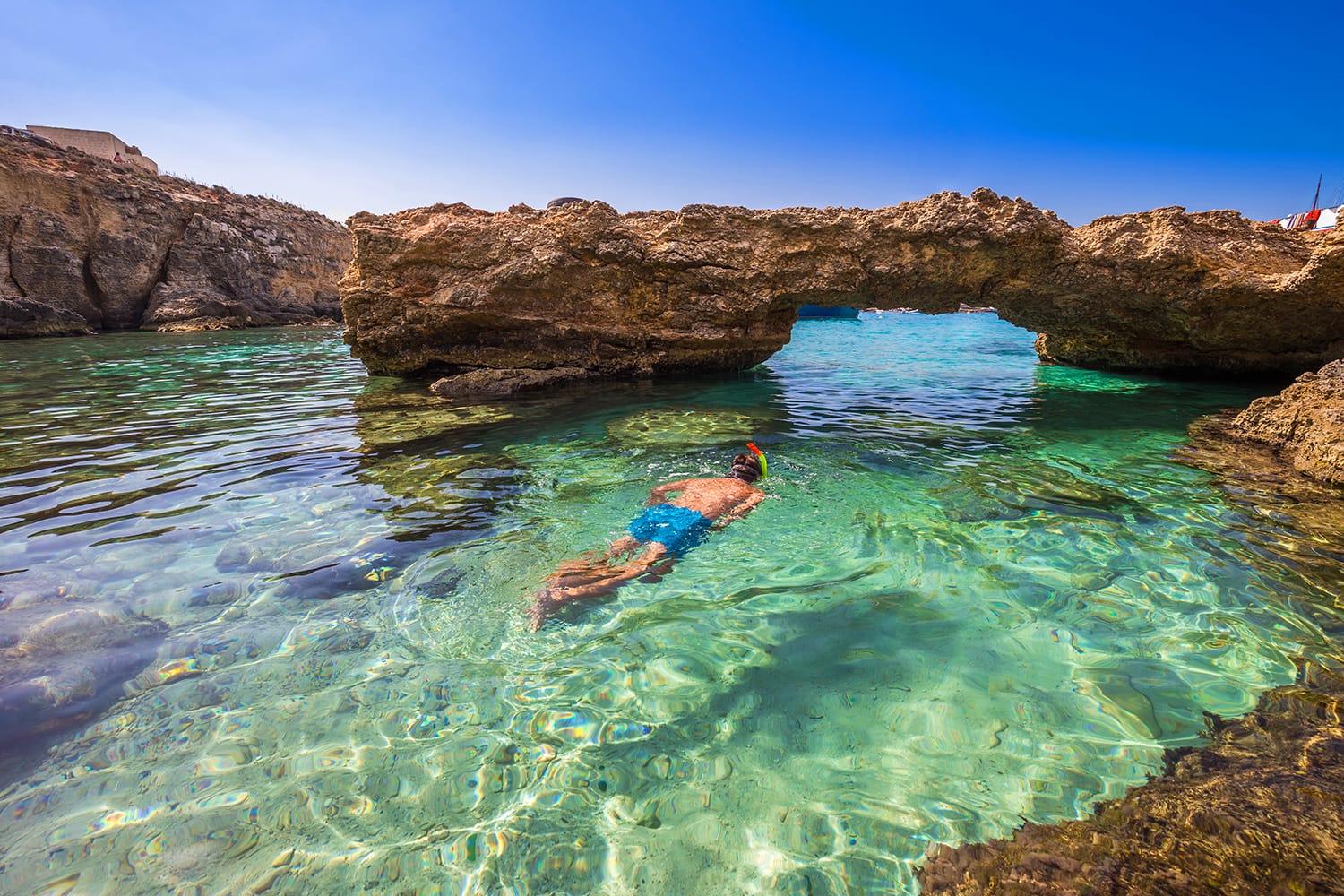
How to Get Around Malta
Matla isn’t a big country, and traveling from one side to the other and back is manageable in a single day. Thanks to its size, travelers visiting Malta have the ability to explore the entire country, often from a single base like Valletta. Malta is made up of several islands so you do need to take into account getting from one island to the next.
Getting around Malta is usually best done by walking, taking a bus, or traveling by ferry. While it’s certainly possible to rent a car and drive around Malta, traffic and narrow streets can make it a slow and trying experience. That being said, there is a car ferry over to Gozo, so there’s almost nowhere in Malta you can’t get by car.
The same can be said of Malta’s bus network. As Malta’s sole public transport, buses in Malta reach every corner of the country. From the moment you touch down at Luqa Airport you can use the bus network to get most anywhere, and it’s always the same ticket price no matter the distance. Of course, the buses too have to deal with Malta’s traffic problems, so always allow longer to get somewhere than the bus schedule may say.
As an island nation with so much coastline, Malta’s network of ferries are a necessity. The most useful ferries to be aware of are from Valletta to Sliema and the Three Cities, as well as from Cirkewwa to the islands of Gozo and Comino.

Where to Stay in Malta
Working out where to stay in Malta is going to be another major consideration when planning your trip. Generally, the best places to stay in Malta are ones that keep you central to Valletta, whether it be in the capital itself or nearby in places like the Three Cities or St Julians’s Bay. No matter which area you choose, be sure to book in advance during high season as options usually book up early.
Unlike other country itineraries, there’s really no need to relocate during your trip as everywhere mentioned here can be covered as day trips if you stay somewhere central. That being said, if you would like to move around a bit, that’s fine. You could move from the Valletta area up to Mellieha or St Paul’s Bay half way through and it really wouldn’t impact your Malta itinerary.
Whether you like to stay in hotels, resorts, hostels, or apartments, you’re bound to find something that suits you in Malta. Malta may not be the cheapest getaway, but backpackers will have a lot to like about the hostels in Malta, with Hostelworld being the best place to look in that regard. For those who prefer to stay somewhere with a few more facilities, the huge selection of apartments in Malta should be a welcome sight. No matter what type of accommodation you’re looking for in Malta, Booking.com is definitely the best place to search.
You should also make sure to have a look at Airbnb if you prefer local or more personal experiences. On there you can find both private apartments and spare rooms and it can be quite affordable, especially with our $40 off coupon!
The Perfect 5-Day Malta Itinerary
To help you understand what the best places to visit in Malta are and where to find them, this guide will show you what Malta has to offer travelers. Following our Malta travel itinerary, you’ll begin in the nation’s tiny capital of Valletta before expanding out to the far corners of the country. Not only will you see other cities, the coast, and what lies inland, you’ll also have the opportunity to see Malta’s other main islands, Gozo and Comino.
However, before we get to our Malta itinerary, we just wanted to remind you to purchase travel insurance. You never know what will happen and, trust us, you do not want to get stuck with thousands of dollars in medical bills. As a wise man once said, “If you can’t afford travel insurance, you can’t afford to travel.” So don’t leave home without it.
SafetyWing offers travel insurance for only about $10 a week, making it a no-brainer to get. You can get a quick, non-binding quote below:

SafetyWing is, of course, not the only option available. Two other popular alternatives are World Nomads and Heymondo.
And back to our guide on what to do with your 5 days in Malta. Below you’ll find all you need to know about the best things to do in Malta so that you can have a fantastic time exploring this charming place.
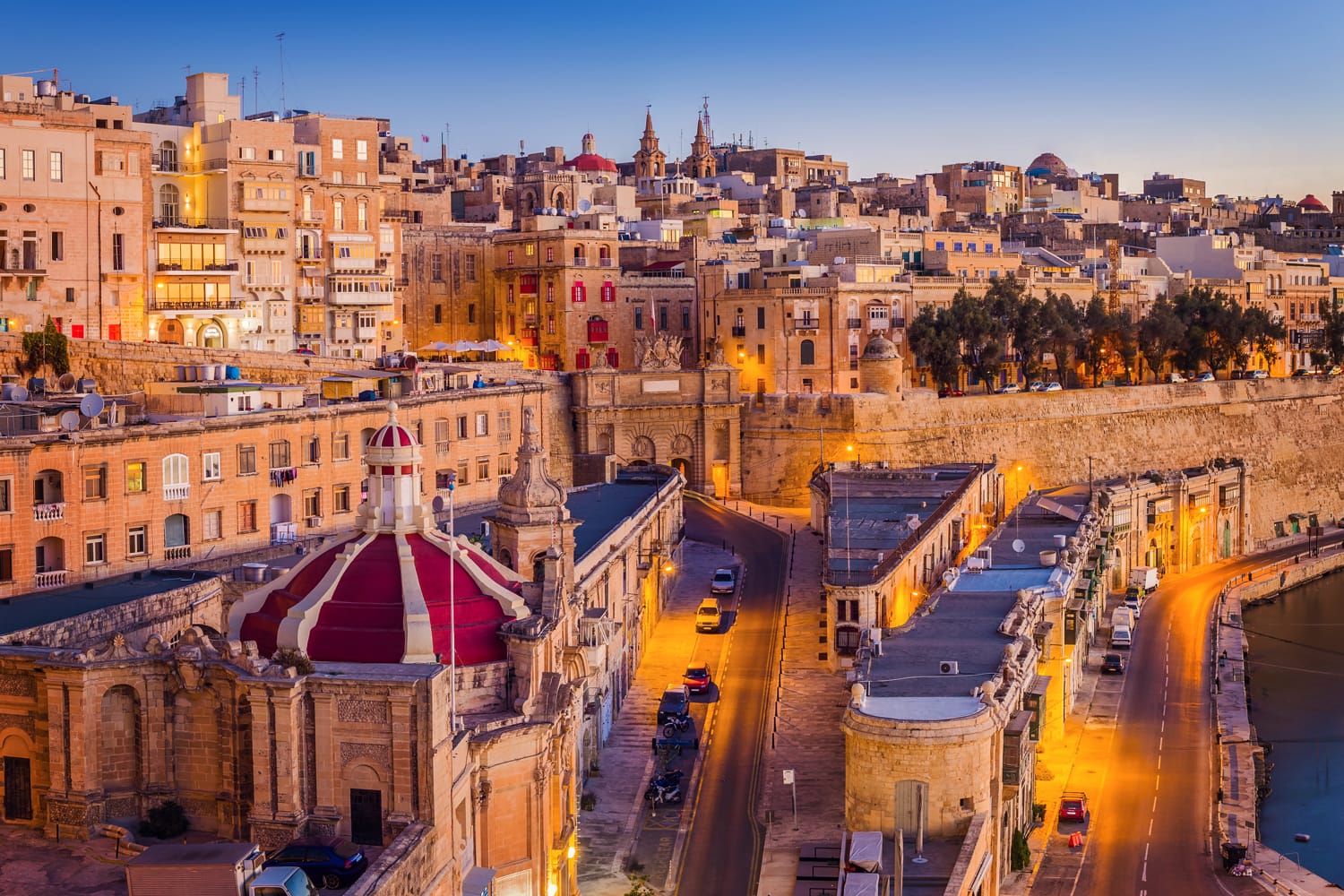
Day 1: Valletta
There’s no better place to start your Malta trip than with the nation’s capital city, Valletta. Stretching across a peninsula with harbors on either side, Valletta is a treasure trove of important Maltese cultural and heritage sites.
Your time in Valletta starts by first heading through the city’s mighty fortifications and entering Valletta’s City Gate. From there you’re able to explore the historic streets of the city, from the main pedestrian area of Republic Street, to all the steep sides streets which run down to the harbors. If you want to see the classic view of colorful Maltese balconies, here’s where you’ll find them.
After a while, find your way to one of Malta’s most important religious landmarks, St. John’s Co-Cathedral. It may date back to the 16th century and has a strong association with the Knights of St. John, but the real draw for visitors is the incredibly opulent Baroque interior full of frescoes and gilded edges. Nearby lies the Grandmaster’s Palace, where you can tour through the palace’s State Rooms and Armoury, formerly used by the Order of St. John.
There’s also more of Valletta’s past to be uncovered in the city’s best museums. For a comprehensive look at the islands’ long history head to the National Museum of Archaeology. To better understand the complicated and bloody military history of Malta, visit Fort St Elmo at the end of the peninsula. If you’d like to see what noble life in Malta looked like, Casa Rocca Piccola and its pretty rooms are sure to satisfy.
Finally, take in some of the best scenery in the city, head for one or both of the Upper and Lower Barrakka Gardens. These garden terraces, besides being pretty on their own, provide superb views of the Grand Harbour and other Valletta landmarks.
For more information on what to do in Valletta in one day, take a look at our detailed Valletta itinerary.
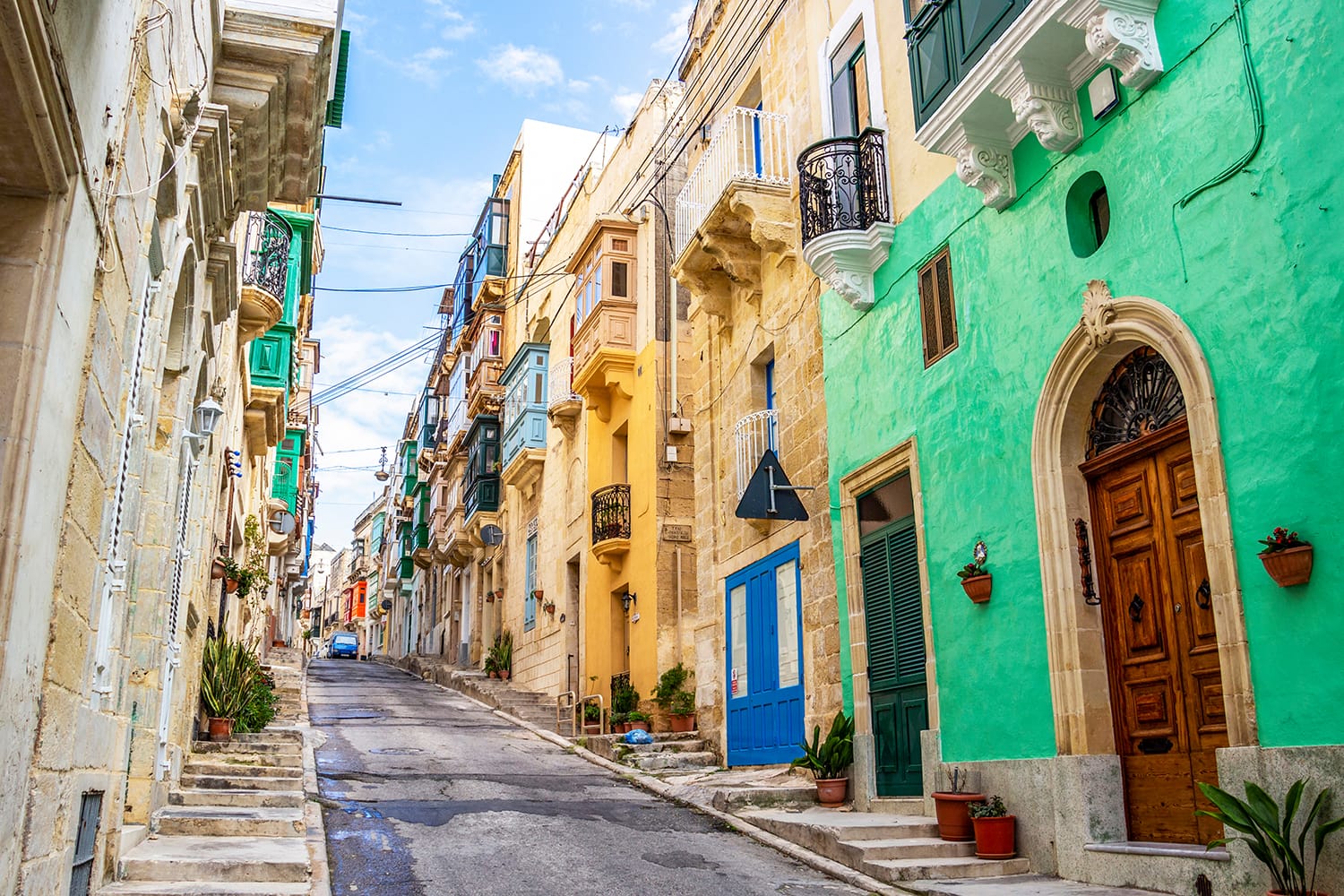
Day 2: Three Cities
On your second day in Malta, venture across the Grand Harbour from Valletta to the historic Three Cities. Made up of Senglea, Cospicua, and Birgu, the Three Cities is a fortified urban area which boasts traditional Maltese architecture and landmarks, but with far fewer tourists.
Begin your visit there with the city of Senglea and the Gardjola Gardens which lie at the point of the peninsula. Part of the fortifications that protected Senglea from the 16th century onwards, under the Order of St John, feature pretty turrets and great views back to Valletta. Passing through Senglea’s quaint streets, come to the impressive Senglea Basilica. Leaving the city, you’ll pass through the main gate of the St Michael Bastion, the fortification that protects this end of Senglea.
Following the waterfront, you’ll soon reach the next of the Three Cities, Cospicua. The most residential of the three, there are few sights to see in Cospicua besides the beautiful St Helen’s Gate and the newly revamped docks there.
Last but not least is Birgu, the oldest of the Three Cities and the capital of Malta before Valletta was founded. Following the waterfront you’ll reach the Maritime Museum which covers Malta’s proud naval traditions. From there, continue into the center of this medieval city and tour the historic Inquisitor’s Palace. Wander the quiet but characterful back streets of the city until you reach Fort Saint Angelo. Here you can learn about all the civilizations that have influenced Malta’s history and enjoy more views of the Three Cities and Valletta.
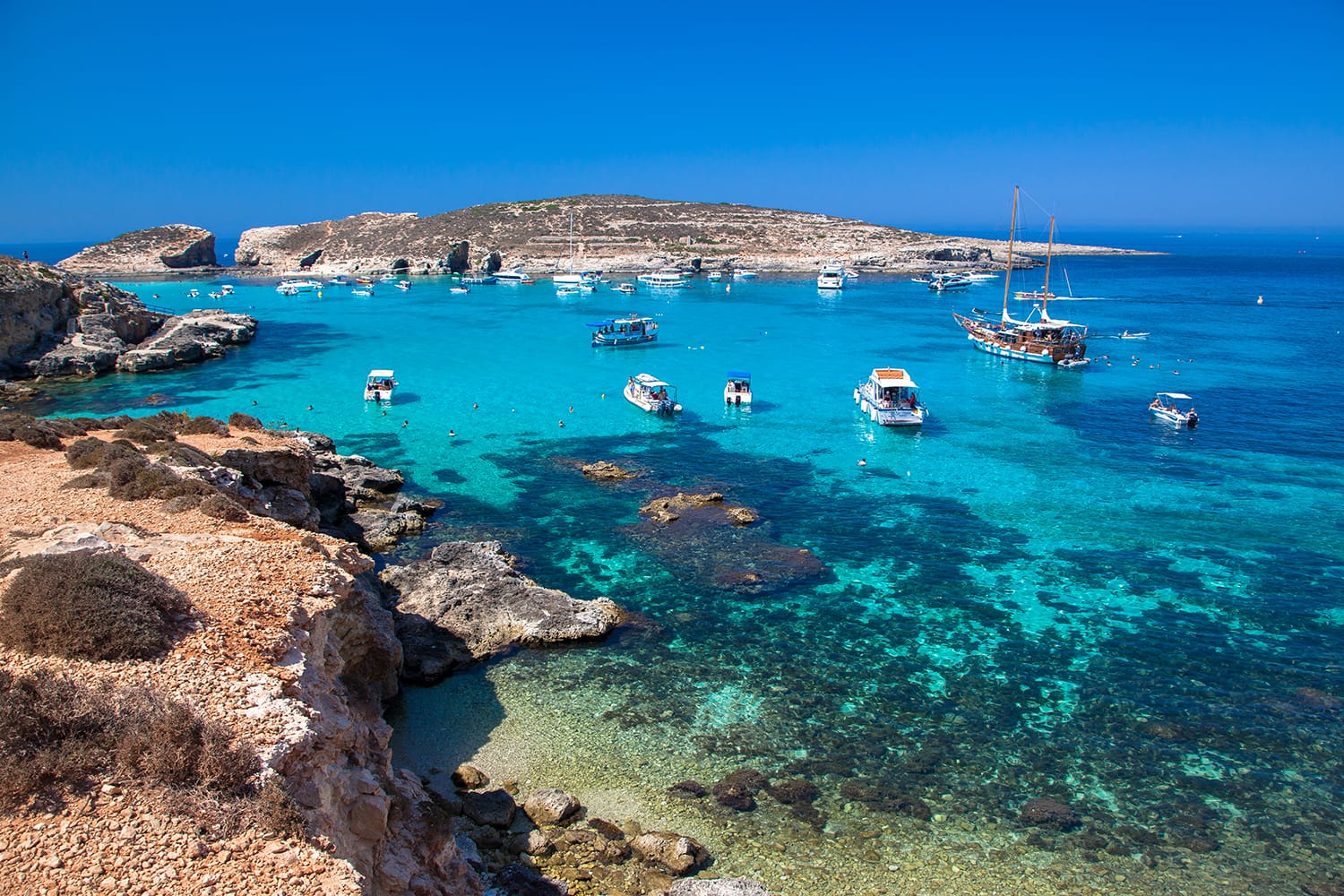
Day 3: Gozo and Comino
Next it’s time to see what’s going on on the other islands of Malta with a trip out to Gozo and Comino. Located northwest of Malta’s main island, the two islands allow you to see some very different sides to Malta.
Recommendation: The best way to experience Gozo and Comino is on a relaxing boat tour. This tour for example comes highly recommended and visits all the most popular spots in that area.
Since it’s closer, start off with some time at Comino. The smallest of the three main islands, Comino only has three permanent residents and is a nature reserve home to rocky and barren terrain. The island is best known for its swimming spots, with the Blue Lagoon being by far the most famous. The Crystal Lagoon however, makes a nice alternative. On land, you can walk or cycle over to the Santa Marija Tower and get some nice coastal views.
Gozo is different again with a much more rural, rustic vibe and is much larger than Comino. Pulling into Mgarr Harbour, you’re already treated to a scenic little town and the Lourdes Chapel looking down upon you. Now, while half a day is far too short to see all of Gozo, most travelers focus their attention on the island’s main city of Victoria.
Found in the dead center of the island, Victoria or Rabat, as it’s also known, is the capital of Gozo. Begin your visit with Independence Square to get a feel for this old-fashioned city, before climbing up to the city’s massive Citadel. This castle-turned-fortress is home not only to great views from atop its fortifications, but also a grand Cathedral and several museums, including the Gozo Museum of Archaeology. Before leaving, take some time to wander the incredibly narrow back streets of Victoria lined with traditional Maltese houses.
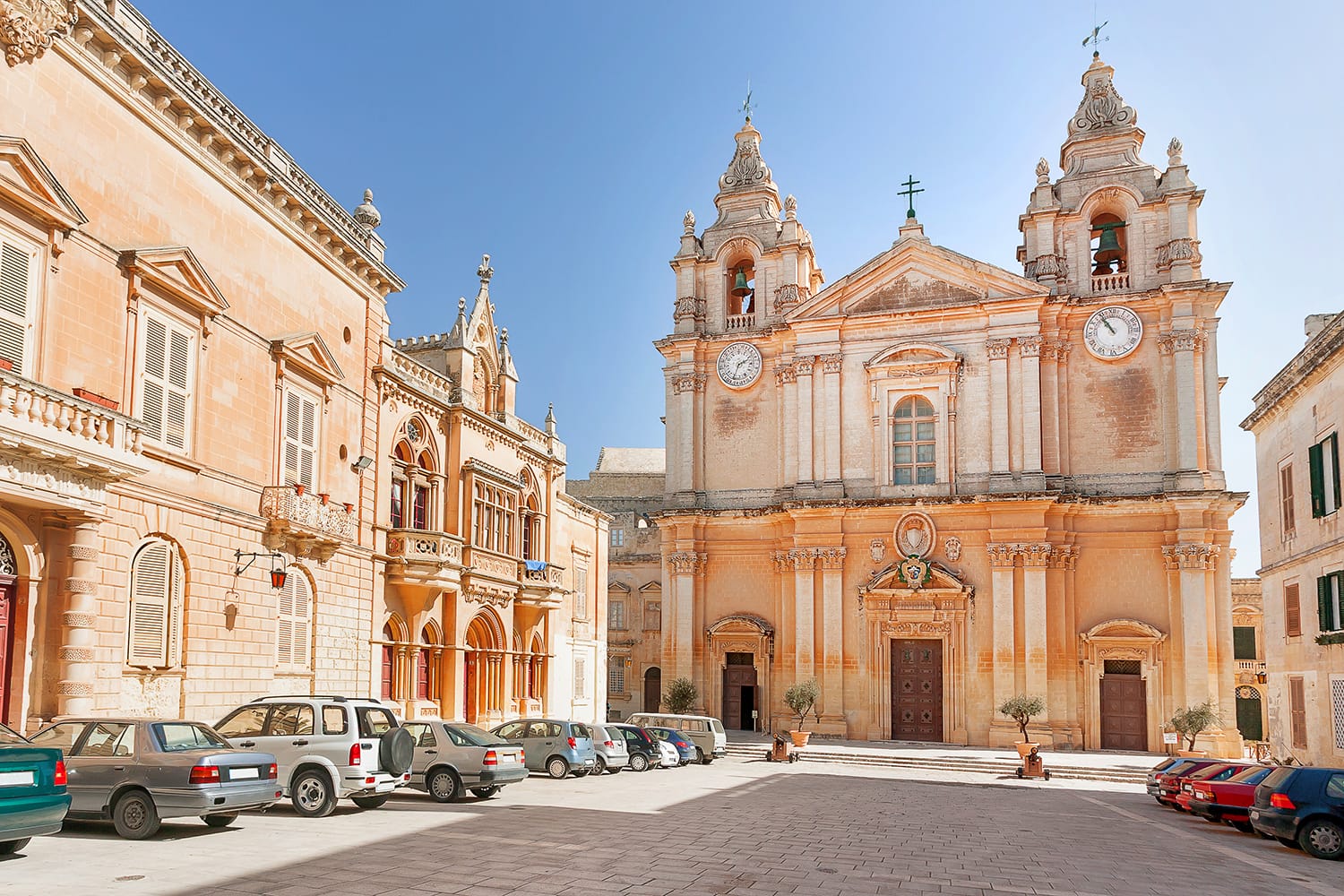
Day 4: Mdina and Rabat
Moving away from the coast, it’s time for a short trip to the ancient fortified city of Mdina and its modern neighbor Rabat. A day here will let you experience a different era in Mdina and some major religious landmarks in Rabat.
Often known as the Silent City, Mdina was long the capital of Malta. Standing outside the city’s defenses, with high stone walls in front of you, it’s evident just how old this city is. Much of a visit to Mdina involves simply wandering from one scenic square to the next down narrow, atmospheric stone streets. You may even recognize some spots, like the bridge through the main gate, as Mdina was one of the Game of Thrones filming locations in Malta.
Mdina has landmarks and attractions as well. One of the best things to do there is to walk up to the ramparts at the northern end and take in sweeping views across the island. Despite how far inland Mdina is, you can still see the coast from up here. The fortified city is also home to several preserved palaces such as Palazzo Falson, churches like St. Paul’s Cathedral, and the National Museum of Natural History.
Beyond the walls of Mdina lies the modern town of Rabat which sprang up around the fortress. Less popular than Mdina, Rabat still has its own share of sights. There’s the Domus Romana museum which houses artifacts and the remains of a house from the times of ancient Roman. You can also see what a 16th century palace looks like at Casa Bernard or see signs of early Christianity in Malta inside the St Paul’s Catacombs.
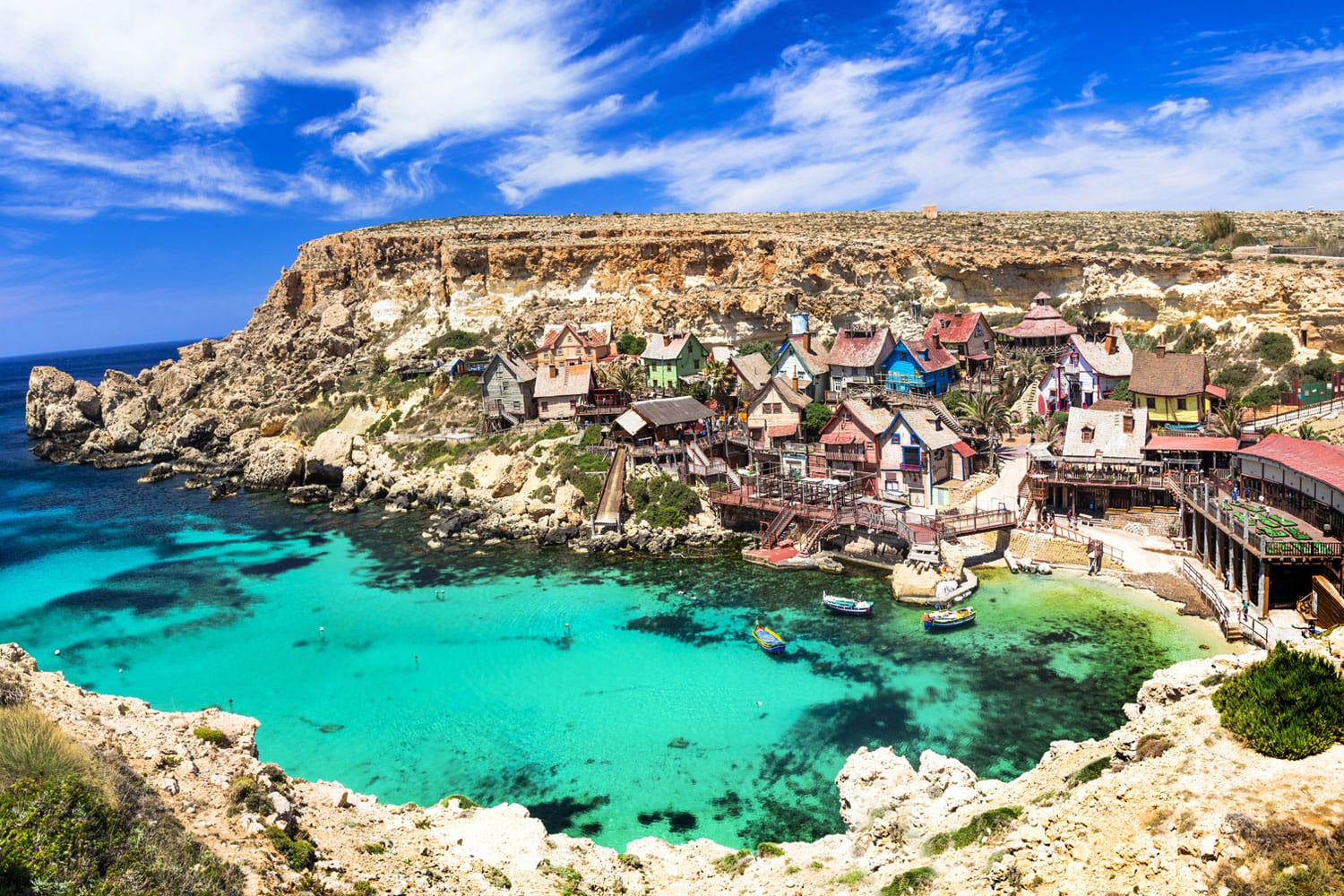
Day 5: Mellieha
With so much more to see in Malta, you’ll want to use your last day there to explore the northwestern end of the island. In that part of Malta, the main focus is the town of Mellieha as well as a strange assortment of sights found across the countryside.
Mellieha is not a big town, but a spot like the Parish Church of Mellieha is reason enough to visit. Not only is the church and nearby sanctuary quite pleasant, but the surrounding terraces offer stunning views. Mellieha is also home to old Air Raid Shelters, some of the largest used in Malta during World War II. Just a short trip down hill and you’ll reach the fantastic beach on Għadira Bay where you can sunbathe or swim.
In this part of Malta you’ll also find a strange yet popular attraction, the Popeye Village. This small set village on a sheltered bay was built for the live-action Popeye movie. Today it’s a Popeye theme park with boat rides, minigolf, and more. The village looks quite pretty from the nearby cliffs, which themselves are worth exploring for their super coastal scenery.
Other assorted attractions in the vicinity include the Red Tower, one of many towers built across Malta by the Order of St John in the 17th century. And on the far side of Mellieha you’ll find Fort Campbell which was a British fort built just before World War II.
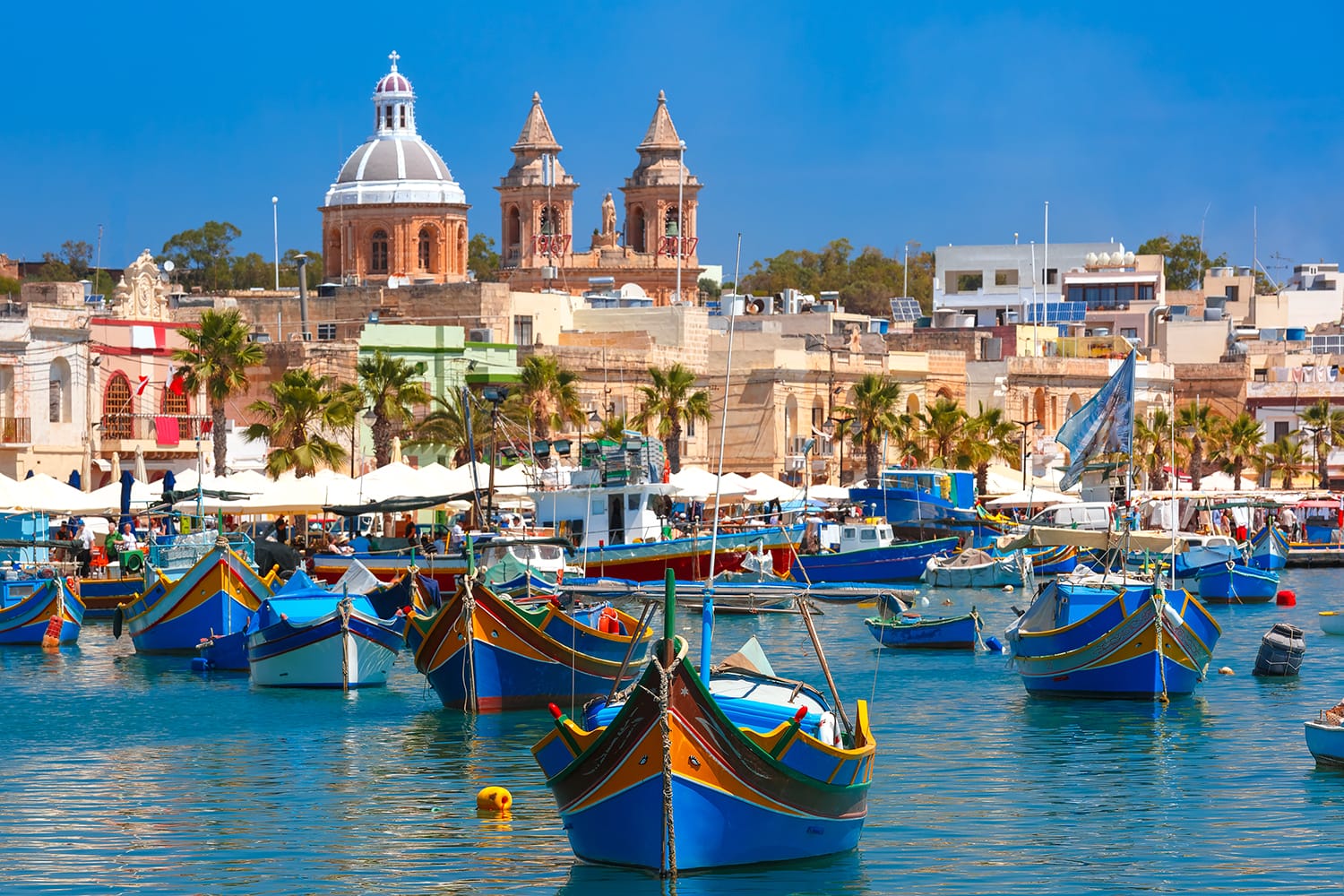
Day 6 and Beyond
The idea behind this 5-day Malta itinerary is to show you the kinds of places you can include during your first visit to Malta. So far we’ve highlighted some of the best destinations in the country, but there’s no reason why you can’t stay longer and spend 1 week in Malta or more. To help you decide whether you want to spend longer in Malta, here are just a few suggestions of other great places to visit.
- Marsaxlokk: Out on Malta’s eastern coast, Marsaxlokk is a traditional fishing village known for its pretty scenery. Take a stroll along the village’s waterfront to see the brightly colored traditional Maltese fishing boats known as luzzu. Marsaxlokk is also known for its Sunday market, where the fish market has evolved into a farmers market with local produce, clothes, and souvenirs.
- Dingli: Another beautiful coastal destination that lies past Mdina is the small village of Dingli. Best known for the epic and rugged Dingli Cliffs, you’ll certainly want to take a walk down along this remarkable coastline. Further inland, you can visit the Clapham Junction cart ruts which show where an ancient road once ran by the Għar il-Kbir cave. From there, walk over to the Buskett Gardens, Malta’s only real forest, for orange trees and woodland scenery.
- Gozo: Even though you already spent a little time on the island of Gozo, there’s much more to be seen there. For giant cliffs and rocky coastline, head to the Ta’ Ċenċ Cliffs or Dwejra Bay. Gozo is home to some incredible historical landmarks as well, namely the UNESCO recognized Ġgantija neolithic temple. Head over to Ramla Beach, a beautiful spot, or visit the seaside salt pans found to the west of Marsalforn, which are a unique sight. Best of all, you can hike most places here.
Now that we’ve gone through what you can see of Malta in 5 days, it should be clear just how many great places there are in Malta to visit. Malta may be small, but it’s not light on things to keep you busy and entertained.
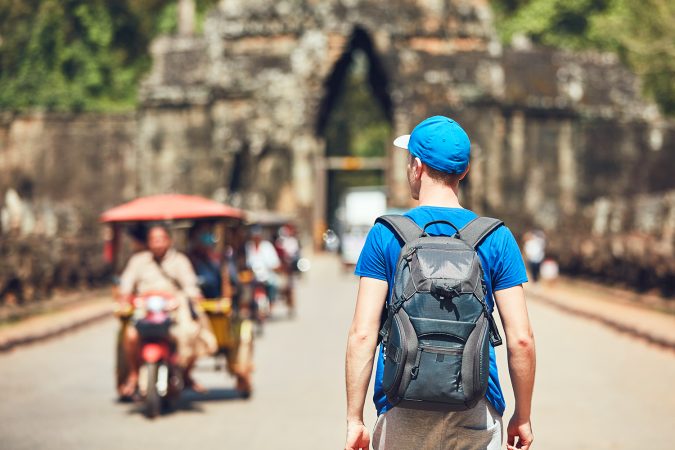
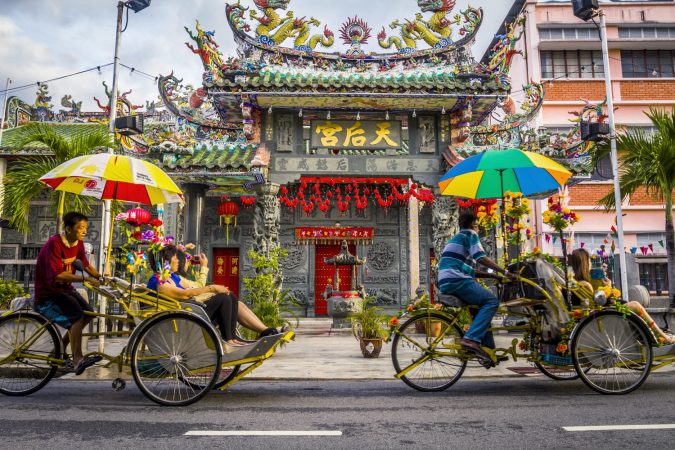
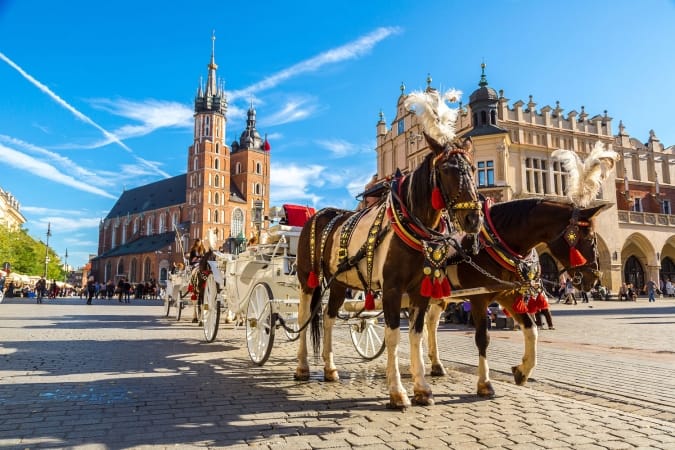
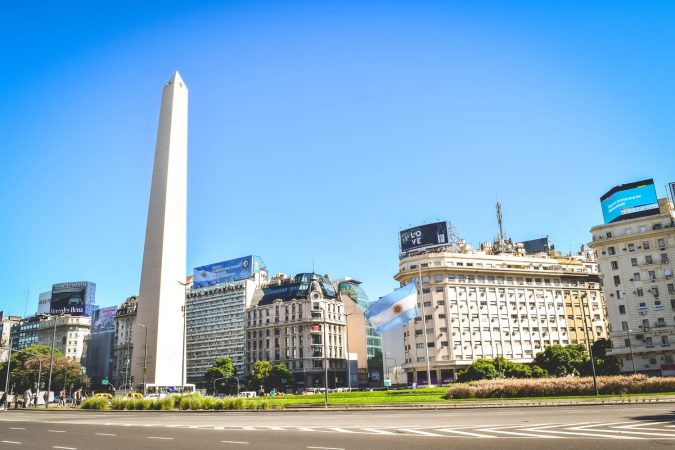
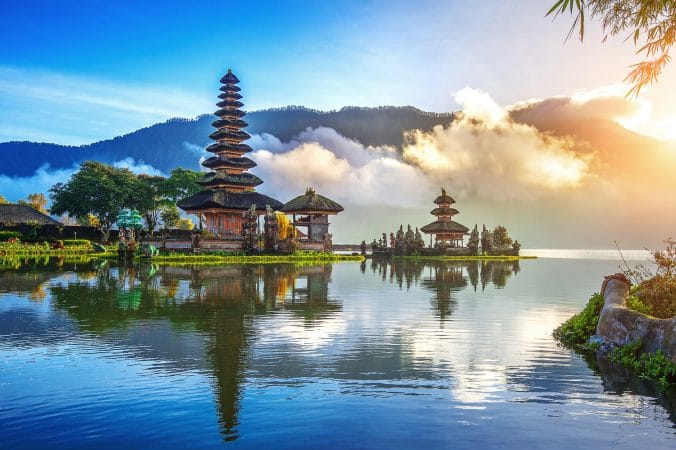
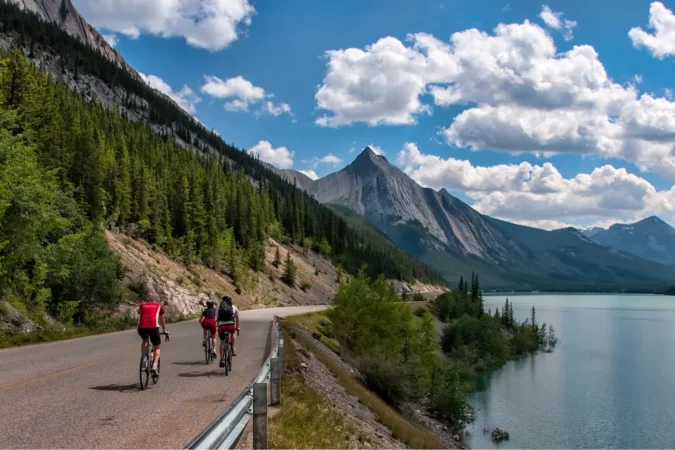
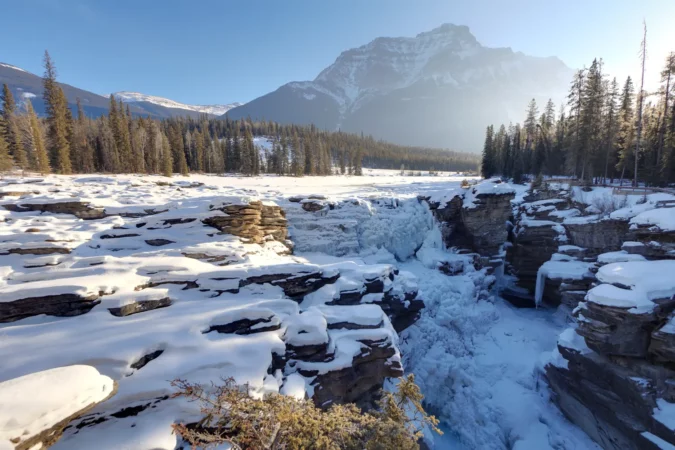
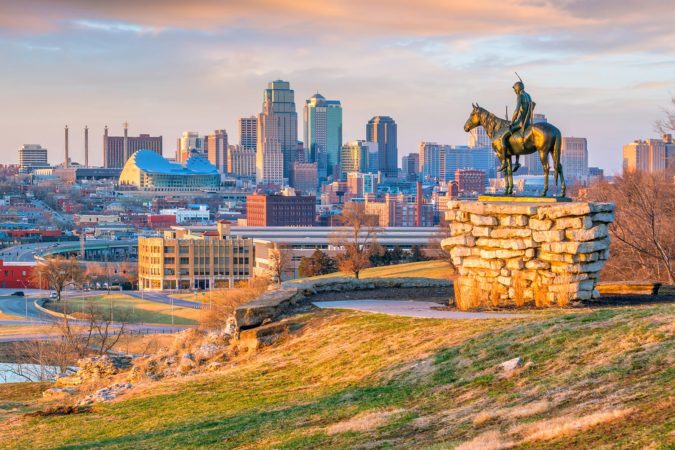
Comments